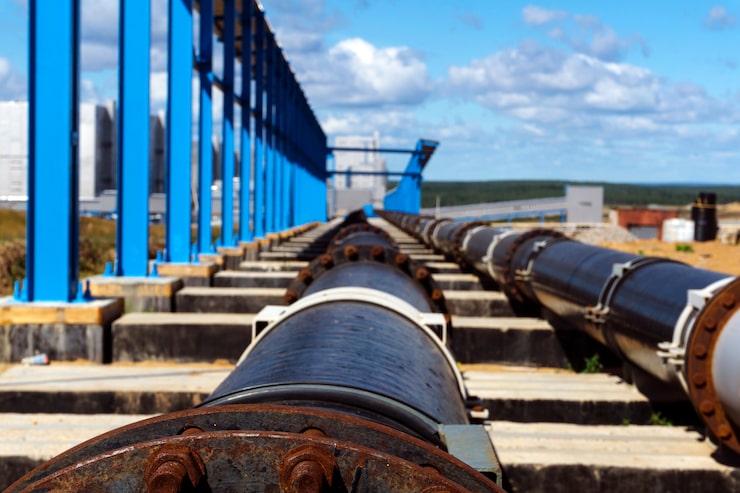When working with polyvinyl chloride in piping systems, one of the most common questions from engineers, contractors, and manufacturers is, “Can you fusion weld PVC?” This question arises because fusion welding is a popular technique for joining many types of thermoplastics, but PVC has unique properties that make its welding methods different from materials such as polyethylene (PE) or polypropylene (PP). Understanding the feasibility, techniques, and limitations of fusion welding PVC is essential for anyone involved in plastic fabrication, industrial piping, or construction projects.

PVC, or polyvinyl chloride, is a thermoplastic polymer widely used in water supply systems, drainage pipes, electrical conduit, and chemical processing lines due to its excellent corrosion resistance, low cost, and good mechanical strength. Fusion welding generally refers to using heat to melt the surfaces of two pieces of thermoplastic so they bond together at a molecular level. This technique works very well with materials that soften uniformly when heated, such as HDPE, but PVC behaves differently when exposed to high heat.
Understanding PVC’s behavior in welding applications
When heated, PVC does not melt in the same smooth and homogeneous way as some other thermoplastics. Instead, it tends to degrade if the temperature is too high, releasing hydrogen chloride gas and causing discoloration or brittleness. This means that standard butt fusion welding—common for PE and PP—cannot be applied to PVC in the same straightforward manner. As a result, alternative joining methods or modified fusion techniques are often used.
PVC can still be joined by heat in certain circumstances, but it requires precise temperature control and specialized equipment to avoid damaging the material. In many industrial settings, solvent cement welding is preferred, where a chemical solvent softens the PVC surface and creates a molecular bond without excessive heat. However, thermal fusion welding for PVC is possible with the right approach.
Methods of fusion welding PVC
Socket fusion (with temperature control)
In some cases, specially formulated PVC grades can be joined using a socket fusion method, where a heated tool softens the inside of a fitting and the outside of a pipe end before they are pressed together. The temperature is kept lower than with PE welding—typically around 260–280°C—to minimize degradation.Hot gas welding
Hot air welding or hot gas welding involves using a controlled stream of heated air (or inert gas) to soften both the PVC and a compatible PVC welding rod. This method is commonly used for fabricating PVC sheets, tanks, and ducting systems in industrial ventilation.Infrared fusion welding
Infrared heaters can provide a more uniform, non-contact heating process for PVC parts, reducing the risk of overheating and localized degradation. This technique is more common in specialized manufacturing environments.Extrusion welding
For larger plastic fabrication jobs, extrusion welding uses a small extruder to feed molten PVC welding rod directly into the joint. This process is ideal for joining thicker PVC sections in industrial applications.
Advantages of fusion welding PVC
Even though PVC is not as easily fusion welded as some other plastics, the benefits of successfully using a heat-based joining process can be significant:
Strong, leak-free joints without relying solely on adhesives.
Compatibility with chemical environments where solvent-based joints may not be ideal.
Ability to fabricate custom structures, such as tanks or ventilation systems, that require continuous seams.
Limitations and considerations
Before deciding to fusion weld PVC, there are important factors to keep in mind:
Temperature sensitivity – Overheating can damage PVC’s structural integrity.
Material formulation – Rigid PVC (uPVC) and flexible PVC have different heat tolerance levels.
Fume safety – Heating PVC releases harmful gases; proper ventilation and fume extraction are critical.
Equipment requirements – Not all plastic welding tools are suitable for PVC, and specialized temperature-controlled equipment is essential.
Industrial and commercial applications
Fusion welding for PVC is often used in industrial plastic fabrication, such as creating chemical storage tanks, ventilation ducts, fume hoods, and certain piping systems. In the water treatment sector, hot gas welding can be applied for custom PVC components where traditional fittings are not practical. The marine industry also uses PVC welding for corrosion-resistant enclosures and panels.
While in plumbing and construction, solvent cement remains the most common joining method, fusion welding provides an option for projects where mechanical strength, durability, and chemical resistance are critical. This makes understanding the technique valuable for engineers, procurement managers, and maintenance teams.


